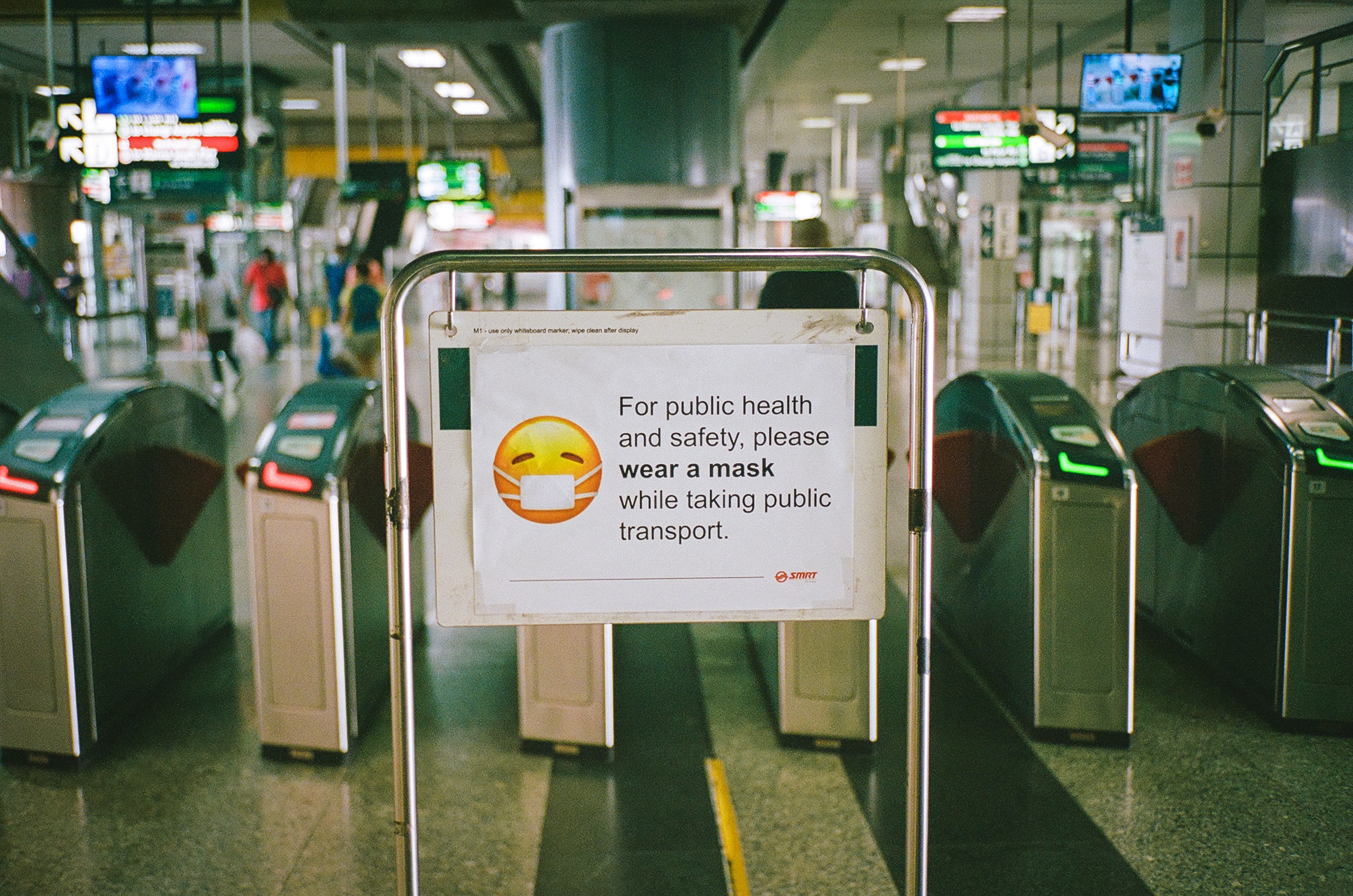
How a member of the public reacts to health crises depends on a lot of differing factors, including perceived risk or resistance to the disease, trust in the government, and general anxiety levels.
Since media, including government-sourced information, can also determine how individuals respond to health messages, the impact of crisis communication could depend on how the risk is framed.
Dr Su Lin Yeo and colleagues explore the effectiveness of the Singaporean government’s messaging to promote COVID-19 prevention behaviours, be they social distancing, mask wearing or hand washing. In particular, does viewing the world as dangerous in general affect the success of prevention messages?
Read their original research: https://doi.org/10.1080/1553118X.2022.2036742
Transcript:
Hello and welcome to ResearchPod. Thank you for listening and joining us today.
In this episode, we’ll delve into the research of Dr Su Lin Yeo and colleagues, which explores the effectiveness of the Singaporean government’s messaging to promote COVID-19 prevention behaviours. More specifically, the research investigates the impact of the belief in a dangerous world. In other words, does a pre-existing perception of the world as chaotic and threatening influence the success of prevention messages? The research goes on to compare the impact of this psychological bias against the role of messaging characteristics, such as the trustworthiness of media portrayals, to provide greater insight on the factors influencing take up of disease prevention. Broadening such knowledge can help shape future communication strategies, not only for the COVID-19 pandemic but for upcoming risks to public health.
The COVID-19 pandemic has led governments around the world to implement stringent measures for preventing the spread of the virus. These have included border closures, nationwide lockdowns and shutting down offices and public places. Before the development of the vaccine, the only way to stem the spread was to encourage the population to adopt disease prevention behaviours – from social distancing to hand washing.
Public reactions to health crises depend on many psychological and social factors. These include one’s perceived susceptibility to the disease, trust in the government’s ability to handle the crisis, and one’s general disposition towards anxiety. Certain psychological traits can lead individuals to develop excessive responses to health crises, or indeed to trivialise and downplay the risk. Furthermore, evidence from past pandemics suggests that media and communications also influence preventive behaviours. However, since trust in media and government sources can determine how individuals respond to health messages, the effectiveness of crisis communication could depend on the way in which the risk is framed. The particular tone adopted in these communications may shape the perceived trustworthiness and acceptability of the sources, which may help or hinder adherence to recommended health behaviours.
During the breakout of COVID-19, international news media reported the emergence of a high fatality rate, geopolitical tensions, and panic-buying. These sorts of messages about risk can increase people’s threat perception, which is shown by behavioural studies research to encourage preventive action, even when the government does not mandate such behaviour. However, individuals can also have a pre-existing belief in a dangerous world, regardless of the type of health communication they absorb. Rather than a targeted concern for particular risk, this belief is characterised by a diffuse and generalised sense that the world is chaotic and threatening.
Existing research has examined whether individuals with a belief in a dangerous world have a higher likelihood of adopting disease prevention behaviours. However, so far, no studies have investigated the mediating role of this belief on the reported effectiveness of prevention messages. Dr Su Lin Yeo and colleagues therefore set out to study whether those holding a pre-existing belief in a dangerous world have a distinct response to media promoting COVID-19 prevention behaviours. By comparing individuals with and without this bias towards risk, researchers aimed to uncover the right mix of messaging characteristics that could motivate the broad spectrum of Singaporeans to trust and comply with advice during a health crisis.
The first task of the research was to understand the Singaporean media landscape during the onset of the pandemic. To gain this insight, a content analysis was conducted with over seven thousand COVID-related news headlines from March 2020, published by the two major English press organisations in the country – The Straits Times and Channel News Asia. This pre-study validated the researchers’ assumption that the Singaporean public was exposed to ubiquitous messaging emphasising the danger presented by the virus. Ninety percent of the news headlines adopted a risk-centric framing of COVID-19, indicating that public perception during this period would be profoundly shaped by media reportage adopting an alarming tone.
The main study proceeded to investigate how Singaporeans responded to COVID-19 prevention messaging. More specifically, researchers would examine the impact of crisis communication on individuals with a belief in a dangerous world, hypothesising that they would be more likely to adopt disease prevention behaviours, compared to those without such a bias, regardless of their views on messaging effectiveness. Four-hundred and fifty-three participants were recruited, forming a sample representing Singapore’s population ethnicity and people who were above 21 years old. Participants were asked to complete a survey designed to capture the extent to which they viewed the world as intrinsically threatening, their perception of the effectiveness of crisis communication, and their adoption of prevention behaviours - from regular hand washing to social distancing.
The main study showed that the perceived effectiveness of the government’s pandemic communication trumped the motivating power of a belief in a dangerous world. One aspect of this general finding was that the belief in a dangerous world only contributed to disease preventive behaviors when an individual did not perceive the government’s communication as effective. Furthermore, when individuals viewed government communication as effective, they tended to adopt disease preventive behaviors, regardless of whether they believed the world was intrinsically dangerous. This finding highlights the importance of effective messaging in public health crises, since the whole gamut of the Singaporean public can be made equally receptive to crisis control recommendations given appropriate message framing and approaches.
Additional analysis isolated three characteristics of pandemic communication that were effective for motivating individuals to adopt preventive behaviours. This included informativeness, personal relevance, and objectivity. In other words, to be effective, public health communication would need to deliver personally relevant messages that were both informative and objective. Meanwhile, an overemphasis on the promotion of particular behaviours above general advice and a high degree of transparency, such as describing the successes and failures of infection control strategies, were found to be ineffective for encouraging the Singaporean public to act in ways that stem the spread of the virus.
Overall, the research demonstrates that effective communication is the “lifeblood” of the Singaporean governments attempts to halt the spread of coronavirus. It revealed that the belief in a dangerous world does not significantly impact the adoption of prevention behaviours in general, but for those who view crisis communication as ineffective, it becomes the deciding factor for whether such practices are followed. Effective public health messaging is therefore necessary for steering the population as a whole, and for Singaporeans, this means messages with personal relevance, informativeness, and greater objectivity. These findings shed light on the key factors to be considered for future crises and for the promotion of best practices to reduce infection and help save human lives.
Thanks for listening. Don’t forget to subscribe to ResearchPod for more detailed breakdowns of the latest academic research. See you next time!
Also published on: https://researchpod.org/health-medicine/public-health-messaging-motivations-covid-19-prevention
Podcast is also available on Spotify, Apple iTunes, Google Podcasts, and many more (please use search term “ResearchPod”).
See More News
Want to see more of SMU Research?
Sign up for Research@SMU e-newslettter to know more about our research and research-related events!
If you would like to remove yourself from all our mailing list, please visit https://eservices.smu.edu.sg/internet/DNC/Default.aspx

